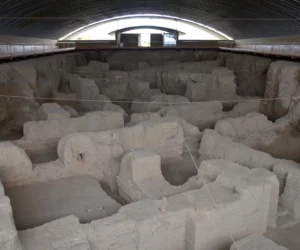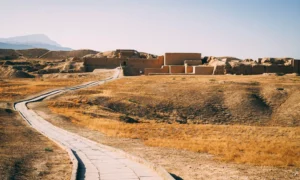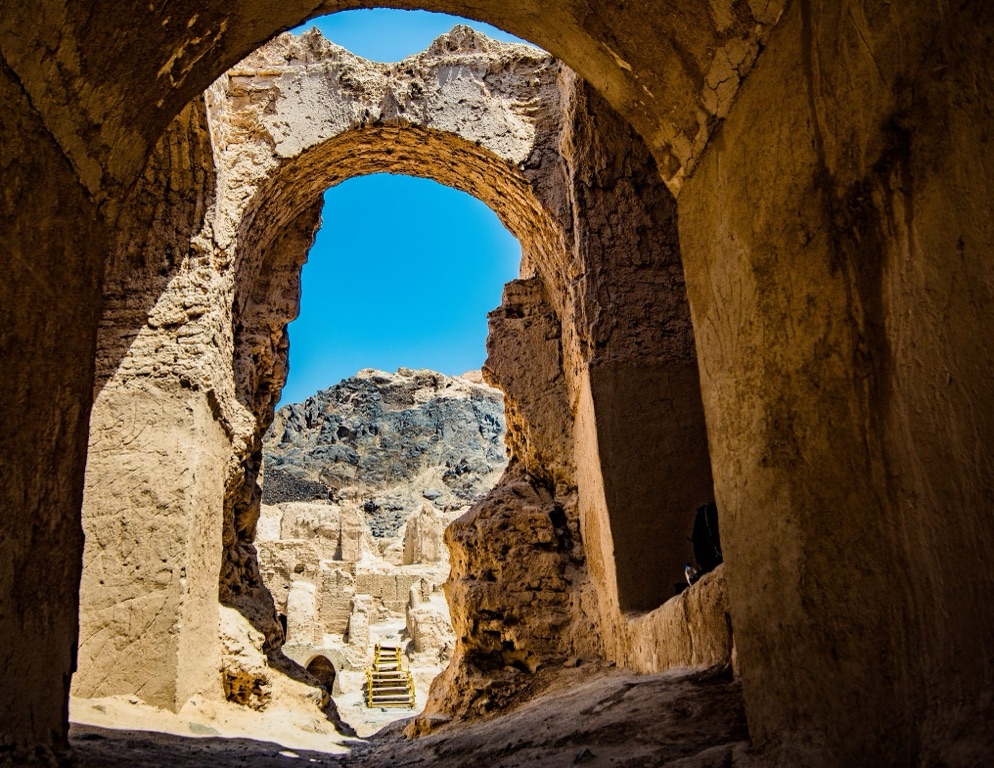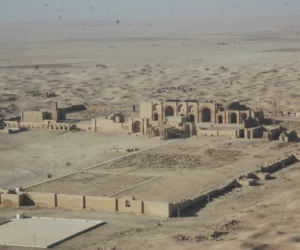Hatra: The Ancient Gem of Mesopotamia Hatra, a sprawling ancient city nestled in the heart of Upper Mesopotamia, holds a captivating story. Located in present-day eastern Nineveh Governorate, northern Iraq (at coordinates 35°35′17″N 42°43′6″E), it thrived as a center of trade and religion from roughly the 3rd or 2nd century BC until its abandonment in…
Parthian Empire
The Parthian Empire, a significant power between 247 BC and AD 224, played a crucial role in the ancient Near East, bridging the gap between the Hellenistic kingdoms and the rise of the Sasanian Empire. Originating from the Parthians, an Iranian people, the empire was founded by Arsaces I, who led a revolt against the Seleucid Empire. This marked the beginning of a dynasty that would expand its territory to include much of Iran and parts of modern-day Iraq, Turkey, Armenia, and Turkmenistan.
One of the major moments in Parthian history was its conflict with the Roman Empire, epitomized by the Battle of Carrhae in 53 BC. This battle, where the Parthians decisively defeated a Roman army led by Crassus, showcased their formidable cavalry, particularly the heavily armored cataphracts and skilled horse archers. This victory, and subsequent engagements, established the Euphrates River as a significant boundary between the Roman and Parthian empires for centuries.
Religiously, the Parthian Empire was characterized by a diverse tapestry of beliefs. Zoroastrianism, the pre-Islamic religion of ancient Persia, was prominent, especially among the ruling class. However, the empire’s vast territory and multicultural nature meant that a variety of religions coexisted, including Greek, Mesopotamian, and later, Christian faiths. The Parthians were known for their tolerance towards different religious practices, allowing them to flourish within their borders.
Social and daily life in the Parthian Empire varied greatly depending on one’s social status and location. The nobility enjoyed a life of luxury, engaging in feasts, hunting, and horseback riding, reflecting their equestrian culture. Artisans, traders, and farmers formed the backbone of the economy, with the Silk Road facilitating the exchange of goods, ideas, and cultures. The Parthian social structure was relatively feudal, with powerful noble families owning large estates worked by peasants and slaves.
The Parthian ruling dynasty, the Arsacid family, provided a succession of kings who varied greatly in their effectiveness and impact on the empire’s stability and expansion. Notable rulers include Mithridates I, who greatly expanded the empire’s territory, and Phraates IV, known for his conflicts with Rome and internal power struggles. The lack of a clear succession principle often led to periods of civil strife and power struggles within the royal family.
The empire’s decline began in the late 2nd century AD, exacerbated by internal strife, economic difficulties, and renewed conflicts with Rome. The rise of the Sasanian Empire, founded by Ardashir I, who overthrew the last Parthian king, Artabanus IV, in AD 224, marked the end of the Parthian Empire. The Sasanians would go on to establish a powerful state that continued to challenge Roman (and later Byzantine) dominance in the Near East.
Culturally, the Parthians made significant contributions, particularly in the arts. Their unique style blended Hellenistic and Iranian elements, evident in their sculpture, coinage, and architecture. The remains of their capital, Ctesiphon, including the grand arch Taq Kasra, stand as a testament to their architectural achievements. Despite their military prowess, it is perhaps in the realm of culture and trade that the Parthians left their most enduring legacy.
The Parthian Empire’s strategic location along the Silk Road not only facilitated trade between the East and West but also contributed to a cultural exchange that enriched the ancient world. Despite their eventual fall, the Parthians played a pivotal role in the history of the Near East, serving as a bridge between the civilizations of the East and West and laying the groundwork for future empires.

Ecbatana
Introduction to Ecbatana Ecbatana, known in Old Persian as Hagmatāna, meaning “the place of gathering,” served as the ancient capital of the Median Empire. It was the first capital of Iran and later became the summer capital for both the Achaemenid and Parthian Empires. The city also played a significant role during the Seleucid and…

Old Nisa Turkmenistan
Old Nisa was an ancient city located at the foot of the Kopet Dag mountain range. It served as the capital of the Parthian Empire, which dominated the region from the mid-3rd century BC until the 3rd century AD. The site includes the fortress of Nisa, which is one of the earliest and most important cultural and historical sites in Central Asia. It was here that the Parthians established one of their earliest capitals. The ruins of Old Nisa reveal grandiose structures, with remnants of a powerful civilization that once thrived. In 2007, UNESCO designated it a World Heritage Site, recognizing its significance in the understanding of the Parthian Empire.

Kuh-e Khwaja
Kuh-e Khwaja stands as an enigmatic historical site nestled in Iran’s Sistan region. This ancient citadel, a relic from a bygone era, whispers tales of the Parthian and Sassanian empires. Visitors can explore the remains of a Zoroastrian fire temple and palace complex. These ruins paint a vivid picture of the site’s spiritual and political significance. With each step, one traverses through time, as Kuh-e Khwaja’s history stretches back over two millennia. Archeologists and historians flock here to unravel its enduring mysteries.

